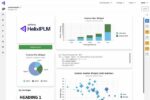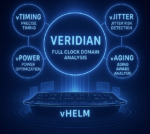High-speed signals enable electronic systems by using memory interfaces, SerDes channels, data center backplanes and connectivity in automobiles. Challenges arise from signal distortions like inter-symbol interference, channel loss and dispersion effects. Multi-gigabit data transfer rates in High-Bandwidth Memory… Read More
Electronic Design Automation
MZ Technologies Launches Advanced Packaging Design Video Series
In a significant move aimed at empowering semiconductor and systems-design engineers, MZ Technologies has announced the launch of a new video series focused on advanced packaging design. This initiative comes at a time when the semiconductor industry is rapidly shifting toward multi-die, 2.5D/3D integration, heterogeneous… Read More
Superhuman AI for Design Verification, Delivered at Scale
There is a new breed of EDA emerging. Until recently, EDA tools were focused on building better chips, faster and with superior quality of results. Part of that process is verifying and debugging the resultant design. Thanks to ubiquitous AI workloads and multi-chip architectures, the data to be verified and debugged is exploding,… Read More
Radio Frequency Integrated Circuits (RFICs) Generated by AI Based Design Automation
By Jason Liu, RFIC-GPT Inc.
Radio frequency integrated circuits (RFICs) have become increasingly critical in modern electronic systems, driven by the rapid growth of wireless communication technologies (5G/6G), the Internet of Things (IoT), and advanced radar systems. With the desire for lower power consumption, higher… Read More
Propelling DFT to New Levels of Coverage
Siemens recently released a white paper on a methodology to enhance test coverage for designs with tight DPPM requirements. I confess when I first skimmed the paper, I thought this was another spin on fault simulation for ASIL A-D qualification, but I was corrected and now agree that while there are some conceptual similarities… Read More
AI-Driven DRC Productivity Optimization: Insights from Siemens EDA’s 2025 TSMC OIP Presentation
In the rapidly evolving semiconductor industry, Design Rule Checking (DRC) remains a critical bottleneck in chip design workflows. Siemens EDA’s presentation at the 2025 TSMC Open Innovation Platform Forum, titled “AI-Driven DRC Productivity Optimization,” showcases how artificial intelligence … Read More
How PCIe Multistream Architecture Enables AI Connectivity at 64 GT/s and 128 GT/s
As AI and HPC systems scale to thousands of CPUs, GPUs, and accelerators, interconnect performance increasingly determines end-to-end efficiency. Training and inference pipelines rely on low-latency coordination, high-bandwidth memory transfers, and rapid communication across heterogeneous devices. With model sizes… Read More
What’s New with Integrated Product Lifecycle Management (IPLM)
I’ve blogged about Methodics before they were acquired by Perforce back in 2020, so I wanted to get an update on Perforce IPLM (Integrated Product Lifecycle Management) by attending their recent webinar. Hassan Ali Shah, Senior Product Manager and Rien Gahlsdor, Perforce IPLM Product Owner were the two webinar presenters. Their… Read More
ClockEdge Delivers Precision, Visibility and Control for Advanced Node Clock Networks
At advanced nodes, the clock is no longer just another signal. It is the most critical and sensitive electrical network on the chip, and the difference between meeting performance targets and missing the tape-out often comes down to a few picoseconds, buried deep inside the clock distribution network. Yet many design teams still… Read More
WEBINAR: Defacto’s SoC Compiler AI: Democratizing SoC Design with Human Language
Modern chip design has reached unprecedented levels of complexity. Today’s System-on-Chip (SoC) designs integrate multiple processors, complex memory hierarchies, sophisticated interconnects, and much more. All requiring orchestration using complex EDA tool flows. Months are routinely lost to configuration… Read More











Quantum Computing Technologies and Challenges